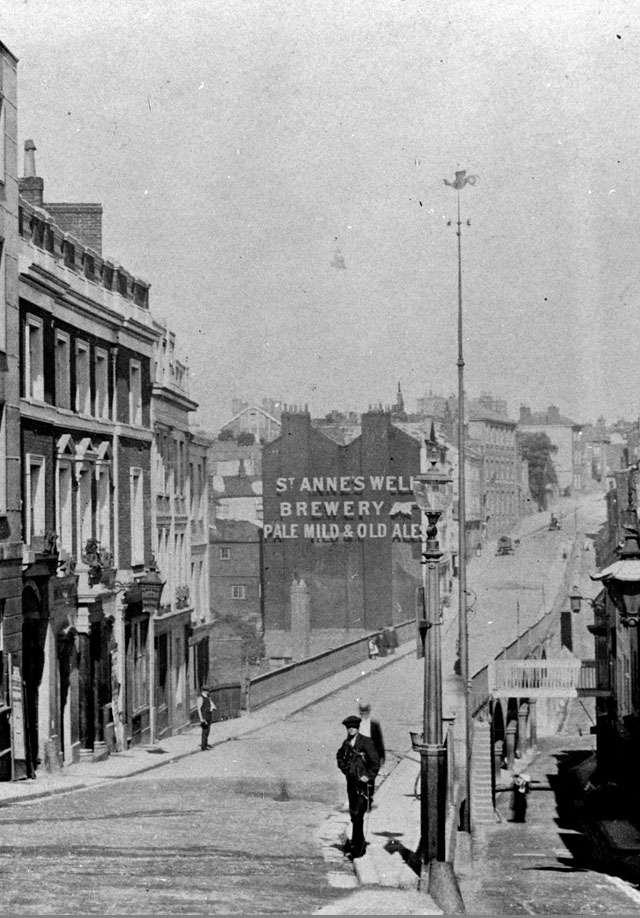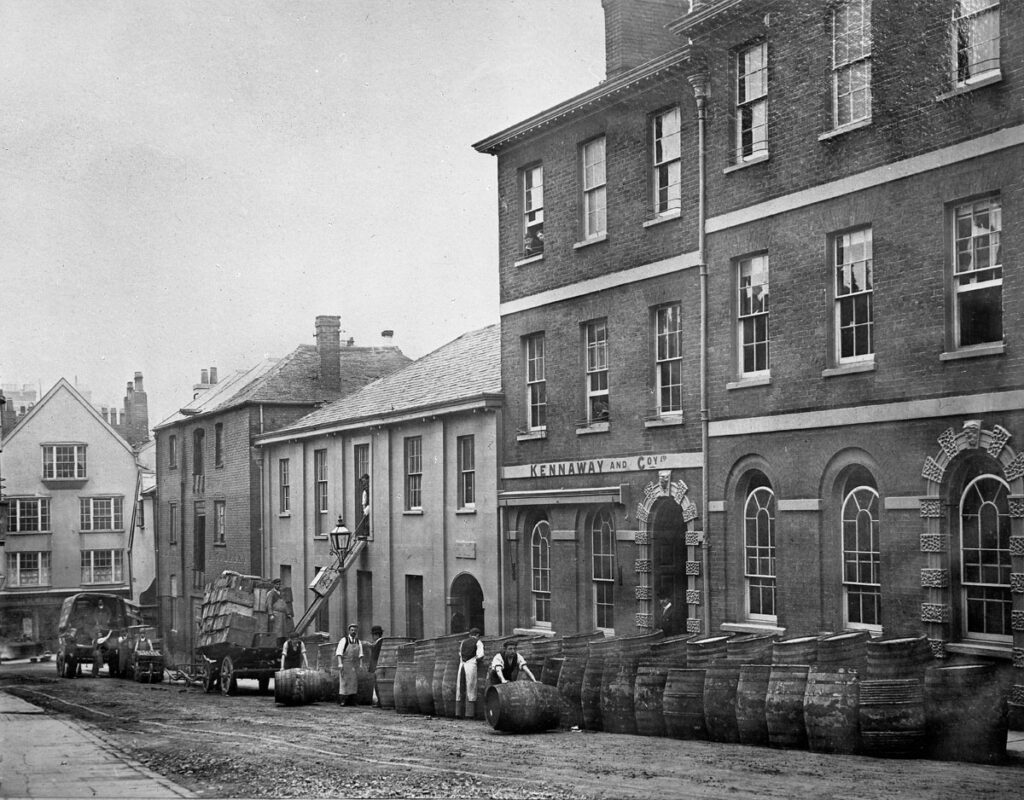Community researcher, Jane Chappell
The complex of buildings beside the Iron Bridge was one of Exeter’s great industrial sites. For nearly a century it was St Anne’s Well Brewery, producing ales, until 1966 when it closed, eventually being refurbished as the existing apartments.
Water from St Anne’s Well in St Sidwell’s, was channelled by the Romans to their cleansing baths. It also supplied breweries for cooling, fermenting and flavour. St Anne’s Well Brewery produced 2X Mild; 3X Strong; Home Brew and Oatmeal Stout, and was a bottling plant for lager. The brewery housed many of its employees in cottages in Lower North Street and Northernhay Street. It had stables for the heavy horses, which pulled wagons laden with casks across the region.
The brewery site was once known as the Pit, where a causeway, crossing the Longbrook valley, allowed road access to into Exeter.
Traffic increased due to the removal of the North Gate and the 1753 Turnpike Act. Along this route, six-horse mail wagons travelled daily to and from Barnstaple and Tiverton.
Before North Street’s steep ascent, passengers disembarked into a welcoming hostelry, the Barnstaple Inn. By 1800, this popular inn was taken over by William Harding. By 1820 he formed a partnership with W. J. Richards, who owned the malthouse in Bartholomew Street. They successfully expanded their brewing and pub ownership.
However, the Barnstaple Inn’s fortunes declined when the Iron Bridge was constructed in 1834. The new bridge allowed city bound traffic to bypass the inn. Harding, Richards and Thomas, their new partner, concentrated on their brewery businesses and by 1878 opened the new St Anne’s Well Brewery in the stable yard behind the old Barnstaple Inn.
Built on different levels, the brewery was designed to maximise water supply by gravity and the input of raw materials above, and dispatch of products below. The brewery noise and smell would have impacted St David’s residents considerably.

